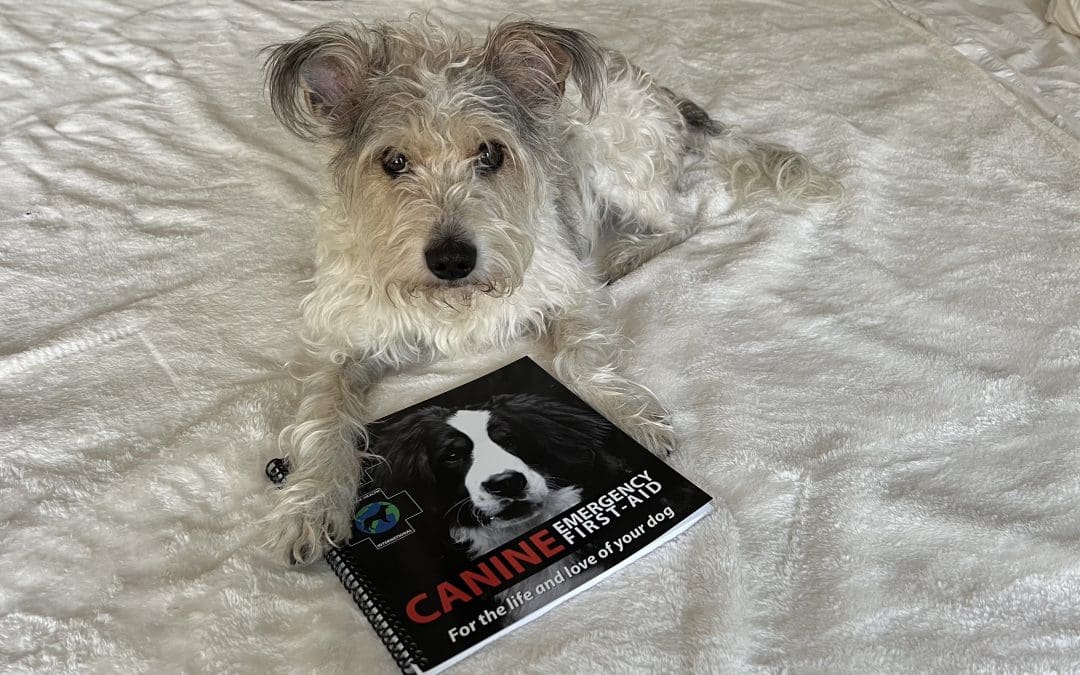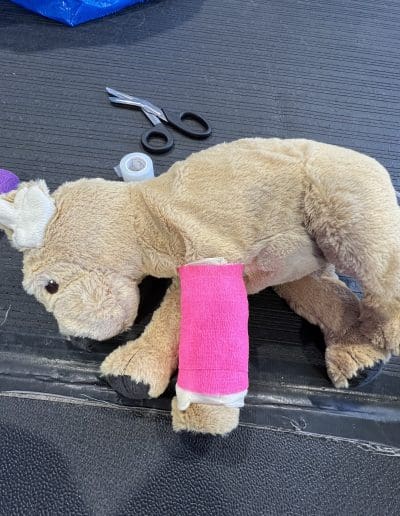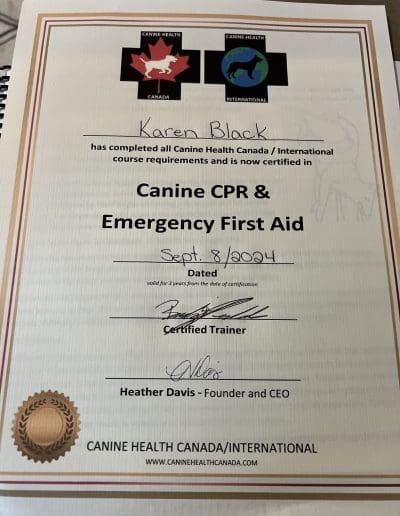Last Sunday, I became a certified Pet First Aider! As a dog photographer in Niagara, I work closely with dogs every day, so it’s important for me to be prepared in case something happens—whether at a photo session, at home with Indy and Lucca, or even a dog at the scene of an accident. I completed an intensive full-day canine emergency first aid course that gave me the knowledge to handle dog related emergencies, no matter where I am. Here’s a little glimpse into what I learned and why I believe it’s essential for dog lovers like us to be prepared, even in small ways.
Why I Took Canine First Aid Training
The course, (offered through St. Catharines’ Unleashed Niagara and led by the extremely knowledgeable Bridget Nicholls – contact info below), gave me the skills to offer first aid in the event of a dog emergency. While I hope I’ll never need to use these skills (my stomach isn’t the strongest!), it’s reassuring to know I have some of the tools that could make a difference to the outcome of a situation. Now I feel better prepared to deal with unexpected situations, at home and at work.
My Top 7 Takeaways from the Canine First Aid Course
1. Assessing the Scene and the Dog
One of the first things I learned was the importance of evaluating the situation. To stop and take in the entire scene before doing anything else, there may be clues or hazards to be aware of at the scene. Ask permission to help before you jump in with someone else’s dog (that’s a legal consideration). Then conducting a “nose to tail” survey of a dog and checking their vital stats are critical steps before administering first aid. Luckily, the training included some handy mnemonic devices to help remember these processes.
2. Making a Makeshift Muzzle
A muzzle can be an important tool during an emergency. Even our own dogs can become frightened and bite when they’re in pain. I learned how to create a makeshift muzzle to protect myself while offering help, ensuring the dog’s safety as well as my own.
3. The Value of Knowing My Dog’s Baseline Vitals
I learned what normal vital signs for a dog are and how to check them. Having a record of Indy and Lucca’s vital statistics when they’re calm and relaxed at home could be incredibly helpful for my vet in an emergency. It’s something I hadn’t considered before, but it actually makes good sense.
4. Preparing Our Dogs for First Aid Through Training
Conditioning your dog to accept touch (feet included!), a muzzle, or a crate before it becomes a medical necessity can make a world of difference… for you, your dog, and any care giver. Imagine how much easier it would be for your vet, groomer or doggysitter, if your dog was trained to accept care!
5. Wrapping a Wound and Stopping Bleeding
I learned how to properly wrap a wound, which could be a lifesaver, especially when dealing with bleeding. Knowing how to handle these situations can keep the dog stable until you can get to the vet.
6. Responding to an Unresponsive Dog
What would you do if you found a dog that wasn’t responsive? Now I know the steps to assess – and the order in which to take them – including how to perform CPR. Though it’s definitely a scary thing to do and not at all like what you see on TV.
7. Performing CPR and the Heimlich Maneuver on Dogs
Learning the right technique was one of the more challenging but obviously essential parts of the training. My go-to 100 beats-per-minute song for CPR? “Stayin’ Alive!” (It’s catchy and keeps the rhythm – and I can hum it in my head.) I also learned the proper way to perform the Heimlich maneuver on both small and large dogs.
Will I Remember Everything? Probably Not…
Let’s be real—there’s a lot to remember. Thankfully, the course provided a handy 130-page spiral-bound book with tons of detailed info, and my own notes, just in case. Plus, now I know exactly what to stock in my canine first aid kits (yes, plural—one for home and one for travel).
Want to Learn Pet First Aid Too?
Courses are specifically tailored to provide First Aid by species. If you’re interested in learning these life-saving skills, I highly recommend following Bridget Nicholls on social media @AnimalIdeaswithBridget or Unleashed Niagara for information about the courses. You can even host a class with at least five participants.
Bridget Nicholls,
PhD Candidate, Department of Sociology & Criminology
Project Coordinator, Animal & Interpersonal Abuse Research Group
University of Windsor
Associate Fellow, Oxford Centre for Animal Ethics




